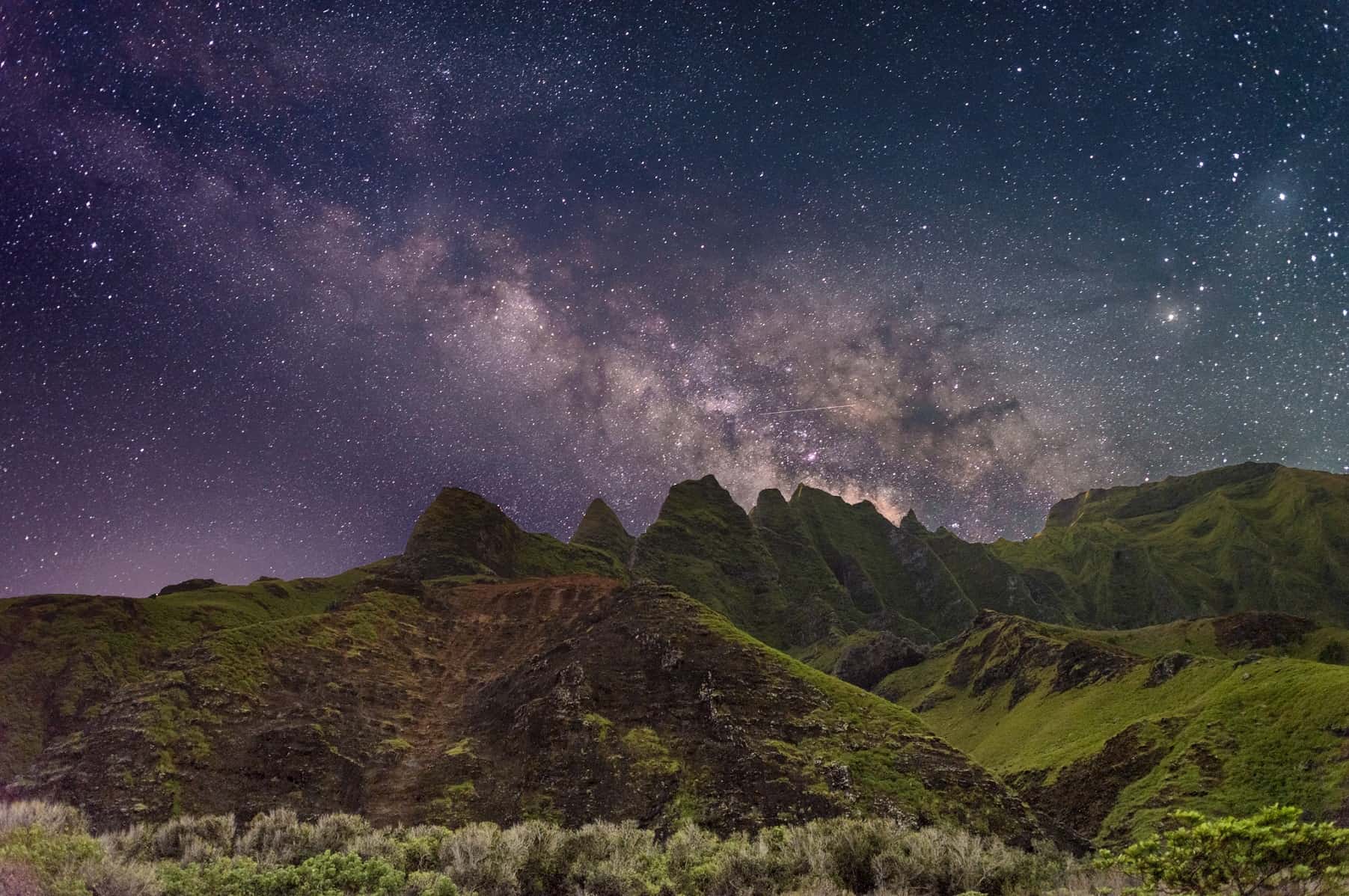Born from the fires of Madame Pele, the Hawaiian Islands are one of the most constantly changing places on earth. Through countless eruptions as well as the ageless forces of wind, rain and the ocean, Hawaii has come to be one of the most fascinating landmasses around. With dramatic coastlines, deep forested canyons and volcanoes that are still spewing liquid hot lava, Hawaii provides endless adventure. The most thrilling part of the islands is that they may look different and have completely new breath-taking natural wonders with every visit.
Na Pali Coast, Kauai
 https://www.flickr.com/photos/67349565@N08/
https://www.flickr.com/photos/67349565@N08/
The jagged, coloured cliffs of the Na Pali Coast have often been compared to the deep walls of the Grand Canyon in Arizona, but both have vastly different origins stories. While the Grand Canyon was withered away by thousands of years of erosion by the Colorado River, the Na Pali Coast was created when a huge chunk of Kauai broke off and fell away into the ocean thousands of years ago. The event left behind the high sea cliffs, or na pali, that rise 1,200 meters over the ocean. The Na Pali Coast State Park protects the sea cliffs as well as the entire Kalalau Valley, but it is not accessible by car. The twenty kilometer Kalalau Trail provides the only land access to the top of the cliffs, but this breath-taking Hawaiian sight is best viewed from the lookouts in nearby Koke'e State Park, by boat or helicopter tours of the area.
Mauna Kea, Big Island
 https://www.flickr.com/photos/joebi/
https://www.flickr.com/photos/joebi/
Mauna Kea, or White Mountain, is a dominating peak on Hawaii's Big Island. If measured from its bottom on the ocean floor to its summit, it would be the tallest mountain in the world. At only 4,205 meters above sea level, it's the state's tallest mountain though it is just a few meters higher than its southern neighbour Mauna Loa. Most visitors climb to Mauna Kea's summit to take in one of the best sunsets in Hawaii, but it is also a hotspot at night for local astronomers as it provides unparalleled views of the night sky, majorly unblemished by the light pollution that accompanies large cities. Regardless of why visitors want to summit Mauna Kea, it provides stunning panoramic views of the Big Island from the ocean to the mountains and the smoke rising from Volcanoes National Park in the distance.
Waimea Canyon, Kauai
 https://www.flickr.com/photos/sharkhats/
https://www.flickr.com/photos/sharkhats/
Coined the "Grand Canyon of the Pacific" by Mark Twain, the nickname has stuck with Waimea Canyon. Unlike the landmark back on the United States mainland, the Waimea Canyon is actually more colourful and features far more waterfalls within its valleys. From the lookouts along the ridge, visitors can enjoy the variety of reds, greens, and oranges of the canyon as well as catch glimpses of some of the taller waterfalls. The canyon runs twenty kilometers long and two kilometers with a depth of 1,000 meters. While the lookouts do it justice and the numerous trails that head down within give visitors an up close and personal view of the rock formations, helicopters are the only way for visitors to get the whole scope of this massive canyon that has been scooped out on such a small island.
Hanauma Bay, Oahu
 https://www.flickr.com/photos/danramarch/
https://www.flickr.com/photos/danramarch/
Originally, Hanauma, or "curved bay," was a volcanic caldera that resulted after the devastating volcanic eruption that collapsed the whole mountain. After thousands of years of flood and erosion from ocean waters, the ocean created the perfect crescent shore that people can stroll today. The sandy beach and rocky mountainous surroundings are popular with visitors, but above all Hanauma Bay is renowned for its world class snorkeling. Off the shores in the beautiful sky blue waters is a coral reef that his home to thousands of tropical fish as well as a favourite playground to a number of green sea turtles. While hordes of visitors flock here each year to snorkel among the sea life, Hanauma Bay is both a Nature Preserve and a Marine Life Conservation District with officials that diligently ensures that visitors do not mistreat the sea life that live so close to shore. Snorkelers should refrain from touching the marine life or the coral and just enjoy the view and the warm blue water.
Kilauea Volcano, Big Island
 https://www.flickr.com/photos/66574772@N00/
https://www.flickr.com/photos/66574772@N00/
Of all the sights in Hawaii there is nothing that draws more interest or inspires more awe that the island's volcanoes. Hawaii's Volcanoes National Park provides a look at the volcanic past and present of the Big Island of Hawaii. Within the park is Kilauea, the world's most active volcano. For the past 25 year, Kilauea has been in a constant state of eruption. While it depends on the ever-changing activity, visitors may be treated to hardening black masses or flowing river of fiery liquid hot lava. Some tours in the area allow visitors to climb the cooled lava flows, but the best way to explore Kilauea as well as the rest of Volcanoes National Park is to enjoy one of the many helicopter tours in the area.


